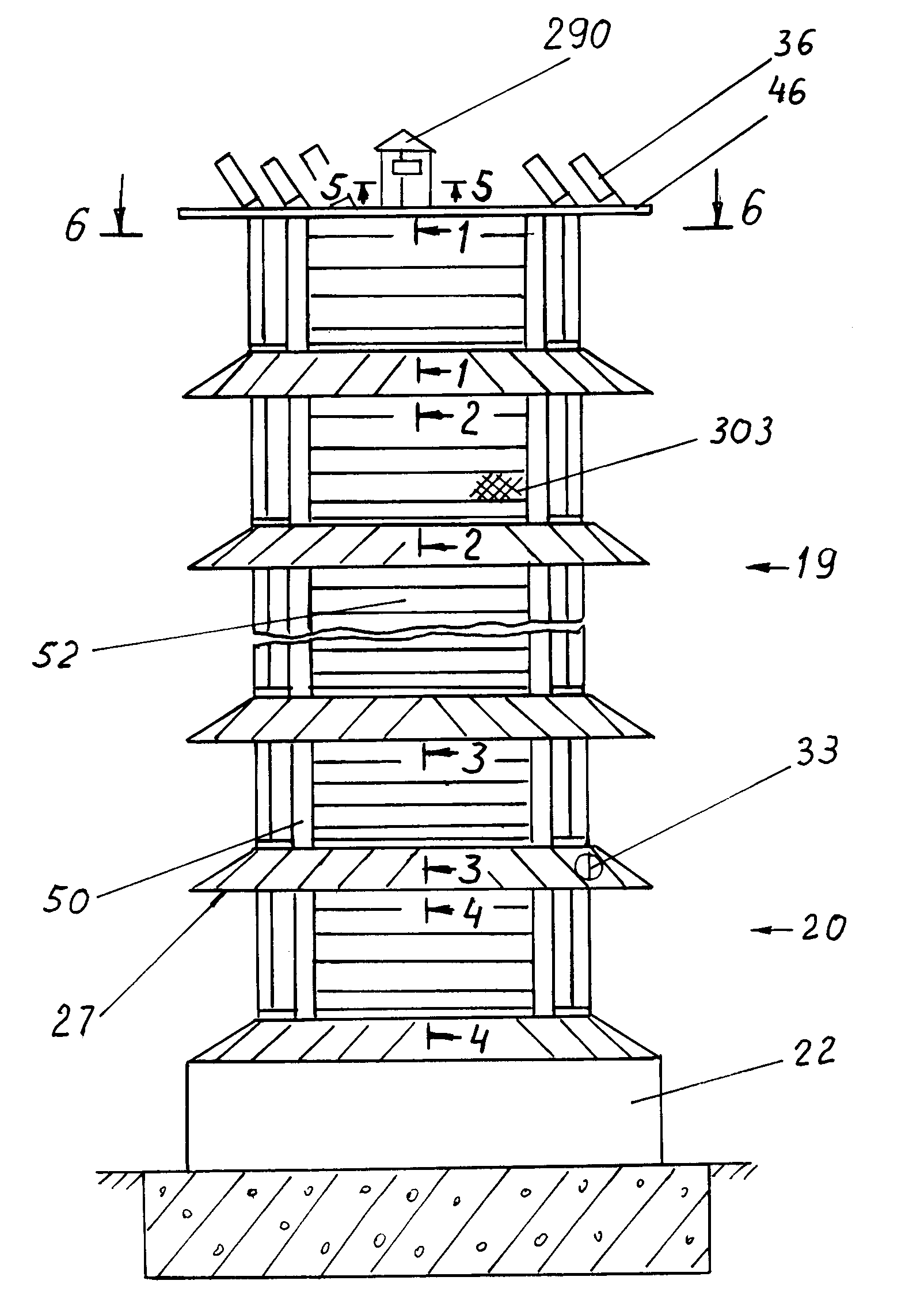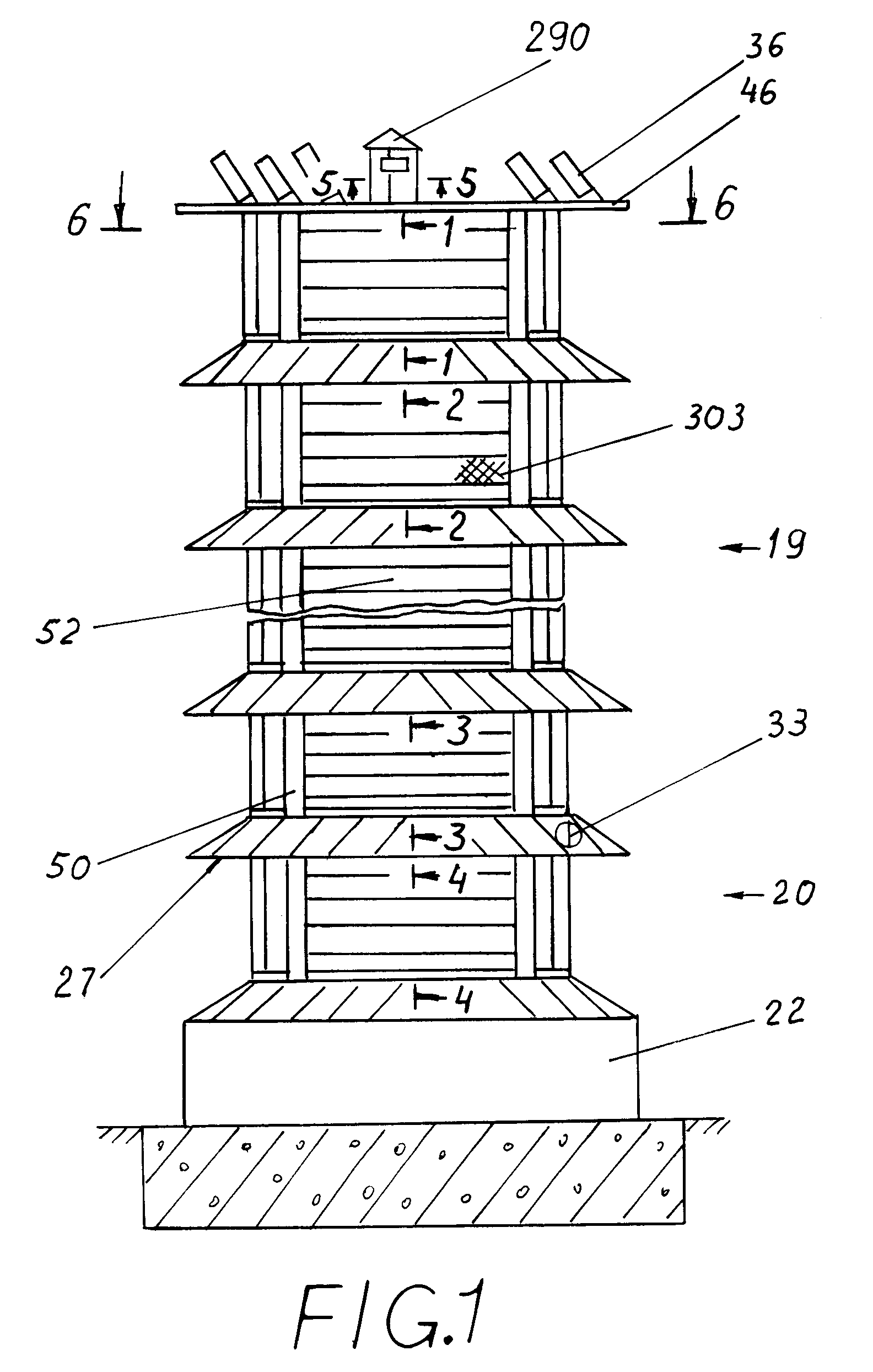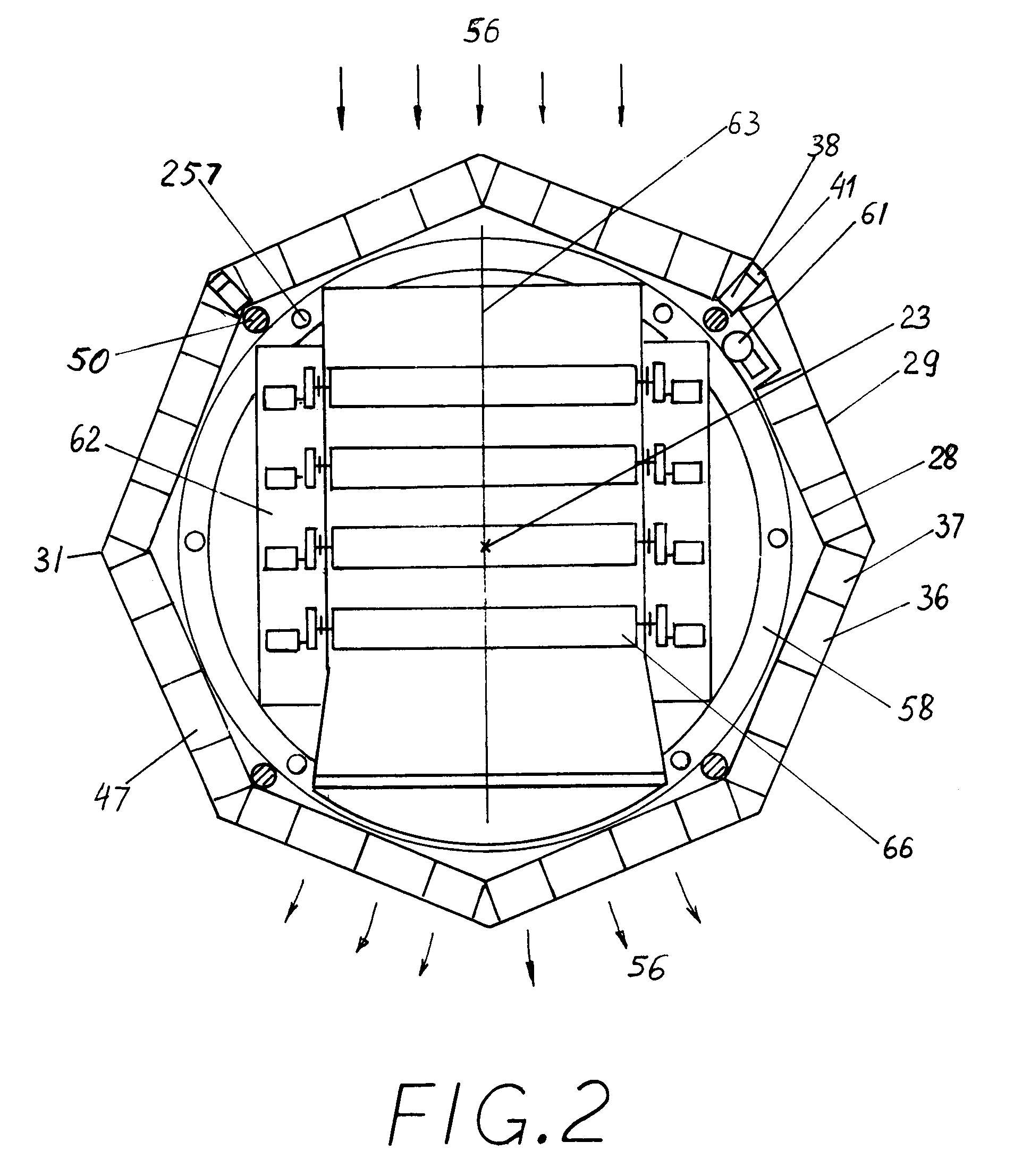Wind and solar power plant with variable high speed rotor trains
a rotor train and variable technology, applied in the direction of fluid couplings, renewable energy generation, greenhouse gas reduction, etc., can solve the problems of high cost of produced energy, need constant maintenance, and known wind power plants cannot win the competition, so as to increase suction, produce a large amount of inexpensive electrical energy, and exceed the effect of energy
- Summary
- Abstract
- Description
- Claims
- Application Information
AI Technical Summary
Benefits of technology
Problems solved by technology
Method used
Image
Examples
Embodiment Construction
[0163]Basically, the operation of all of the embodiments of the invention is the same. Each of the rotor trains shown, for example, in FIGS. 3 and 18, is having the high rectangular entrance 118 for the wind 56. The steams of the wind are gradually contracted by the converging nozzle panels 141 and 142 to a low rectangular wind way 140, where the wind, pressed in the vertical direction, flow much faster compared with the speed of the ambient wind. At the exit of the diffuser 120 the gradually diverging plates 153 and the diverging parts of the vertical walls 121 allow the air, flowing out of the wind way 140, to gradually expand in the vertical and the horizontal dimensions to the volume, bigger than it had at the entrance 118, creating a zone of low static air pressure in the diffuser 120 and a tunnel suction in the wind way 140, causing increase in the speed of the wind inside the wind way. An additional, enlarged zone of low static air pressure is provided by the super-diffuser 1...
PUM
 Login to View More
Login to View More Abstract
Description
Claims
Application Information
 Login to View More
Login to View More - R&D
- Intellectual Property
- Life Sciences
- Materials
- Tech Scout
- Unparalleled Data Quality
- Higher Quality Content
- 60% Fewer Hallucinations
Browse by: Latest US Patents, China's latest patents, Technical Efficacy Thesaurus, Application Domain, Technology Topic, Popular Technical Reports.
© 2025 PatSnap. All rights reserved.Legal|Privacy policy|Modern Slavery Act Transparency Statement|Sitemap|About US| Contact US: help@patsnap.com



